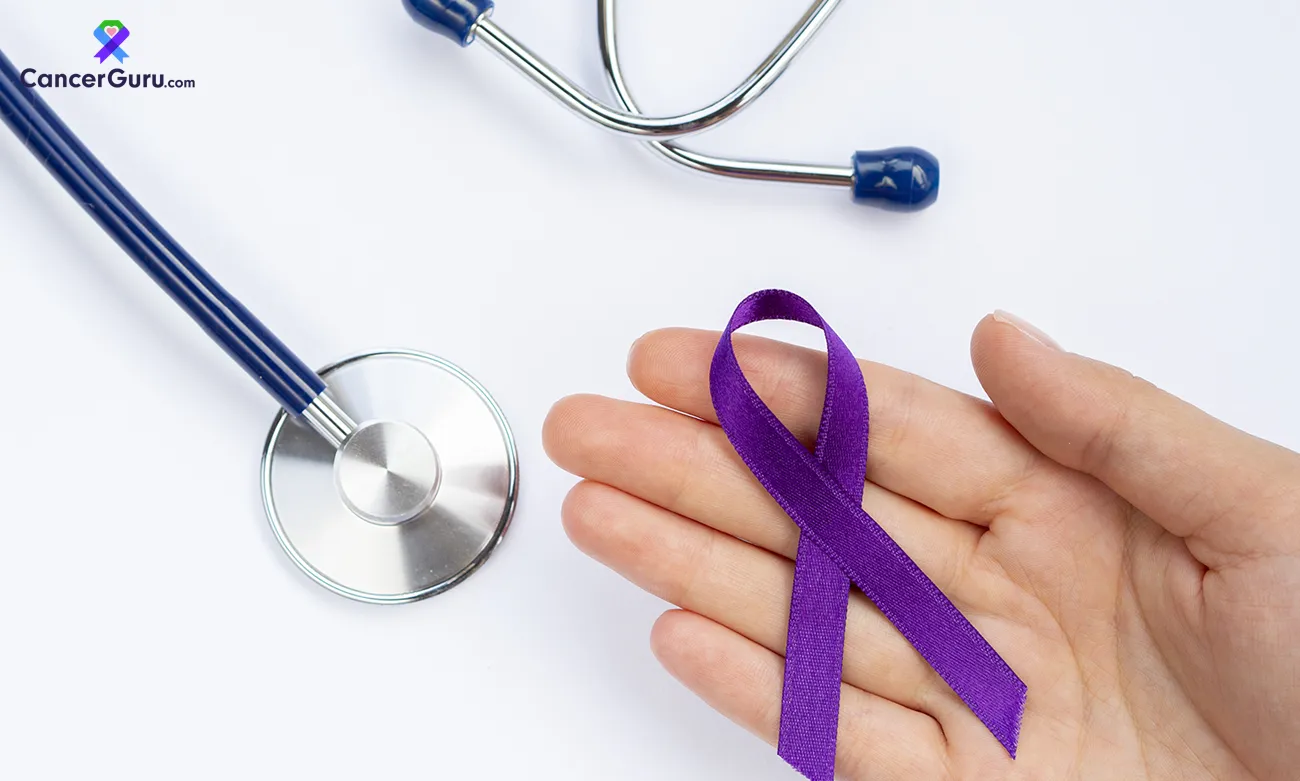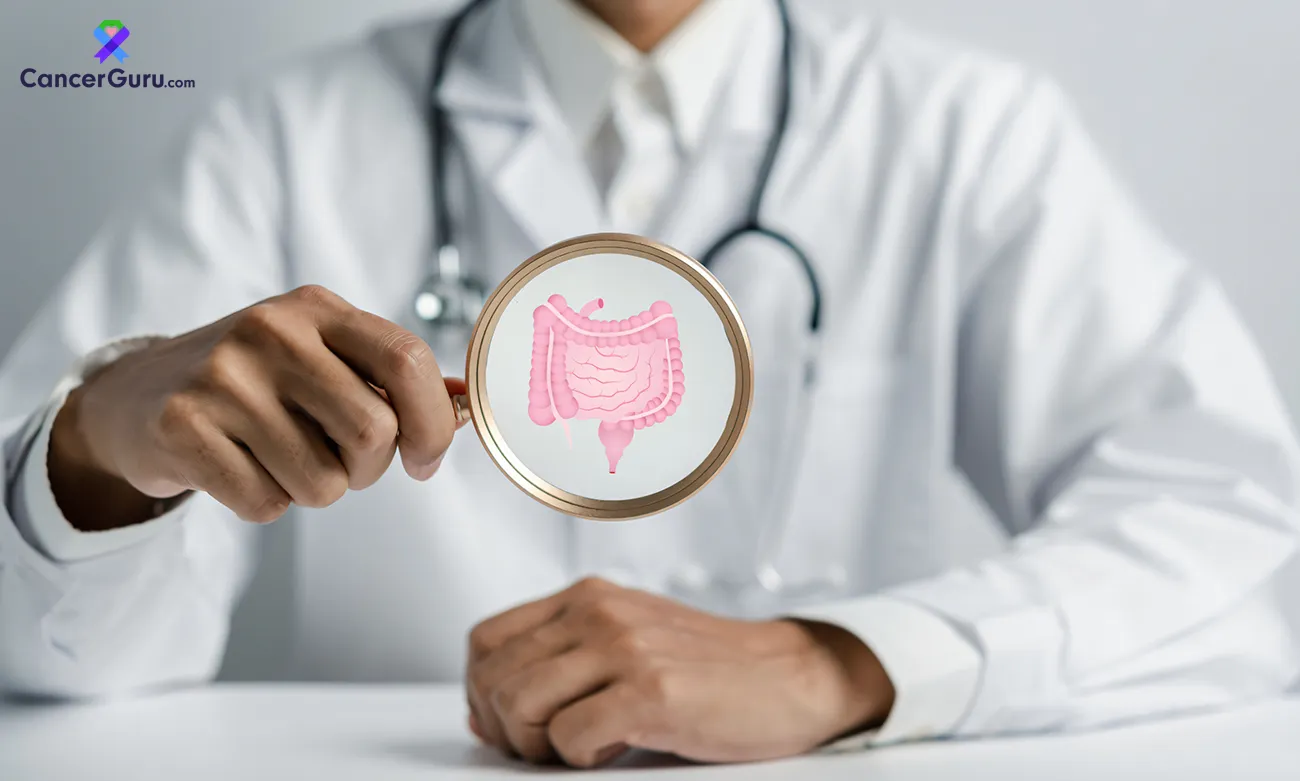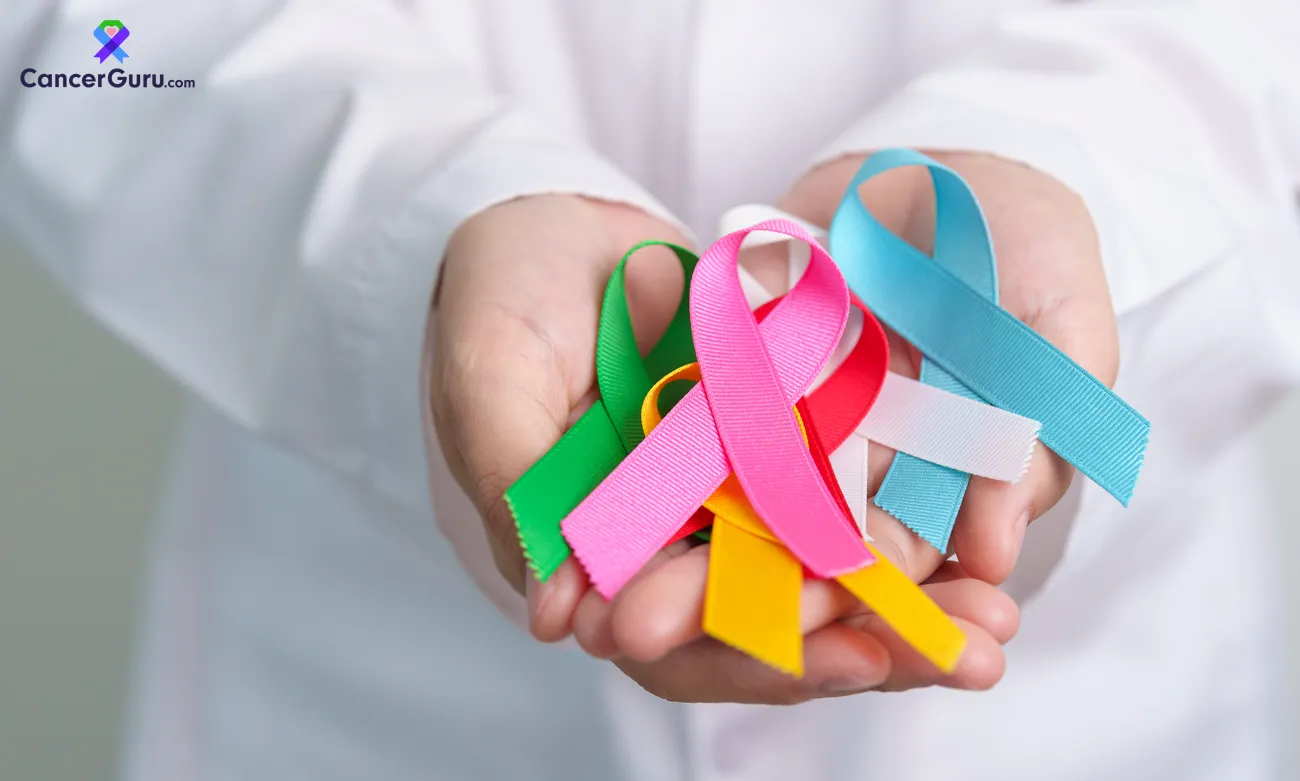- Email: [email protected]
- Contact: +1 (407)581-9000
A Complete Guide on Mastectomy: From Diagnosis to Recovery
October 29, 2025

The decision to have a mastectomy might be the decisive factor in one's breast cancer treatment choice. A mastectomy may be imposed not only by a cancer diagnosis but also in case of a genetic vulnerability or other medical concerns. The procedure can be heavy on the body as well as on the mind. However, if one is well-informed and well-prepared, this surgery can be a very uplifting step to healing and good health for a long time.
The guide gives a thorough explanation of the mastectomy including, the definition, the reasons for the surgery, and ways to cope with it. You may be a patient, a family member looking after a relative, or simply a curious person; this comprehensive guide has been designed to help you and has the information you need all the time.
What Is a Mastectomy?
Mastectomy is a surgical process in which a single breast, both, or part of the breast are removed. The most common purpose of performing this surgery is to treat or prevent breast cancer, but there are also other medical and prophylactic causes.
By conducting a mastectomy, the surgeons strive to excise the tumor along with the surrounding tissue (or do it prophylactically by removing the at-risk tissue) to decrease the likelihood of breast cancer reappearance or emergence. Depending on the case, a mastectomy may be accompanied by various procedures like axilla clearing, breast reconstruction, or even radiation.
In contrast to lumpectomy, which takes away just the tumor and a small margin of tissue, a mastectomy is a more aggressive form of surgery and is often performed in cases of extensive cancer or in situations with significant genetic risk.
Why does it happen?
There are various reasons why a person may require—or decide to—go through mastectomy:
- Breast Cancer: In case of cancer in one or both breasts, and if a lumpectomy cannot manage the case, a mastectomy may be advised to clear the region of all diseased tissue.
- Significant Breast Cancer Risk: Those with BRCA1 or BRCA2 hereditary mutations, alongside a strong family history, might go for surgical removal of breast tissue as a preventive measure so that their risk is significantly lowered.
- Reappearance or New Tumors: A mastectomy might prove to be the most beneficial next action if cancer comes back after treatment.
- Radiation Therapy Limitations: At times, due to earlier treatments or health issues, one cannot undergo radiotherapy and hence, surgery becomes the only way to treat cancer safely.
- Patients’ Choice: For some patients, mastectomy is the way to go for surety, esthetic reasons, or to be free of future surgeries.
How to treat mastectomy
To start with, a mastectomy is a surgical process that is mainly regarded as a way to treat cancer in the breast. Nonetheless, the operation is not the end of the whole treatment; usually, it is made up of the following stages:
- The surgical procedure (mastectomy) means to remove the entire tumor plus a bit of surrounding tissue.
- Adjuvant Therapy: Treatment will include either hormonal, radiation or chemotherapy depending on the cancer's type and stage.
- Reconstruction or Flat Closure: A few women may decide to lose their breast while others will choose to have a new breast made from either their own tissue or implants.
- The rehabilitation and follow-up period includes physical therapy, mental support, and regular monitoring for cancer recurrence.
A unique treatment plan is prepared for you considering your preferences, body type, and diagnosis.
Types of Mastectomies
Mastectomy surgeries are mentioned by different names depending on the extent of the removal of tissue. Some examples of such kind’s surgery are:
- Simple (Total) mastectomy removes the entire breast tissue including areola, nipple, and most of the skin. It is usually performed in cases of prevention or early detection of cancer.
- A modified radical mastectomy, besides taking out the whole breast, also takes out the axillary lymph nodes which are behind the arm to check how far the cancer has spread.
- By radical mastectomy, the whole breast, plus lymph nodes and muscles from the chest wall are all taken away. Nowadays, it's rare and only done in very extreme cases where the tumor has invaded a large area.
- Skin-Sparing Mastectomy is a procedure that nearly removes the entire breast but leaves the skin over it behind. This method is mostly combined with the planned reconstruction.
- Nipple-Sparing Mastectomy is a method where the nipple and areola are left in place while the area underneath them is excised. This technique is only applicable to a small number of patients having no cancer in the nipple area.
- A double mastectomy or bilateral mastectomy implies complete removal of both breasts through surgery, usually performed for preventive or hereditary reasons.
How Should one prepare for a mastectomy
The first step on the road to your healing will be to have a thorough consultation with your healthcare provider, wherein a treatment plan will be tailored to your specific needs and preferences, and this plan will entail the type of mastectomy surgery, along with the option of getting a breast reconstruction surgery. You will also be educated on the specifics of your recuperation. This very knowledge will help you to arrange your daily activities accordingly after the surgery.
Typically, your healthcare provider may advise you to limit your activities for a certain period after the surgery. They will reason that you should not be able to raise your hands above your head and thus you will have to rearrange the stuff on the top shelves down. You will only be able to carry the weight of a milk gallon, which is why it is good to have someone take care of the lifting and carrying.
Some of the breast cancer support groups may be helpful to you. Sharing with others about their mastectomy experiences might ease your anxiety about your coming mastectomy and post-operative period. You probably will not only hear some useful hints beforehand but also will establish a network that you can tap into during your recovery. It is also possible that you will have to:
- Quit smoking: Smoking has one of its side effects in the reduction of blood circulation, and thus recovery takes a longer time after surgery. If you smoke, there is a chance that you will be ruled out for reconstructive surgery.
- Don't eat: For a few hours before surgery, your doctor may prohibit you from having any food. He/She will provide you with very precise directions as to what you can eat and drink as well as when.
- Prepare for your hospital stay: A hospital overnight stay is very likely for you. So it would be smart to set up a system for your coworkers and family members to take over your work and home duties during your absence.
What are the Do’s and Don’ts for mastectomy
Before and after your surgery, it is good to have some general guidelines to follow.
Do’s
- Surgeon’s pre-op instructions should be followed strictly—especially those concerning the taking of food and drinks, and the use of drugs.
- Support for a week should be arranged—help in daily tasks will be of utmost importance.
- Tops that are loose, front-opening should be worn, and no lifting of arms should be required.
- All follow-up appointments should be attended, and any unusual symptoms should be reported, such as swelling, redness, or fever.
- Pain medicine should be taken as prescribed—do not attempt to “tough it out.”
Don’ts
- For the first few weeks, heavy objects should not be lifted, and arms should not be raised above the shoulder height.
- Only a doctor can give the go-ahead for driving.
- Psychological support is equally important and one of the reasons to take time and practice patience during healing is the death of a close person, changes in one's body and tiring activities.
- The healing process should not be hastened since the body will require time to recover and adjust to the new conditions.
Mastectomy Surgery and Recovery
Being conscious of what will happen before, during, and after the mastectomy procedure, stress and anxiety can be one of the things pared down. Thus, this guide gives a clear picture of the procedure and makes you ready for your recovery journey.
Before Surgery
- Pre-operative Preparations: The doctor who will perform the operation, accompanied by the whole medical team, will present to you a thorough plan detailing the preparations needed for the surgery step by step and will also provide you with all the necessary information. Additionally, among those preparations may be quitting smoking, altering medications, and fasting before surgery for a specified time.
- Admission and Waiting: On the surgery day, after you reach the hospital, a nurse will put you on a hospital gown. It can be more tolerable in the pre-operative area if you are permitted to have a family member or a few friends with you.
- Meeting the Anesthesiologist: You and an anesthesiologist will embark on a journey through your medical history, will discuss any allergies you have, and will also decide on the technique for anesthetic administration during your operation.
- Markings: Your surgeon or his/her assistant might use a felt tip pen to mark your breast for the incision during the procedure. Commonly this is done when the patient is seated to allow the surgeon a better view of the natural crease of the breast.
- IV Insertion: A nurse will insert an intravenous line into your hand or arm in order to give you medication.
During Surgery
- General Anesthesia: After complete preparation, you will be rolled into the operating theatre and general anesthesia will be administered in order to put you in a sleeping state.
- Admission and Waiting: On the surgery day, after you reach the hospital, a nurse will put you on a hospital gown. It can be more tolerable in the pre-operative area if you are permitted to have a family member or a few friends with you.
- Breathing Tube: A breathing tube will be put into your windpipe through your mouth while you are in a deep sleep to help with the breathing process.
After Surgery
- Recovery Room: You will be given close monitoring in the recovery room until you are completely awake and vital signs are steady.
- Pain Management: Pain medications will be provided to you to control the ache.
- Drains and Dressings: Your type of surgery will determine whether you will have drainage tubes and surgical dressings on your body or not. Nurse will show you how to do the dressing change and when it will be removed.
- Hospital Stay: Your hospital stay will be determined by the mastectomy and reconstruction type performed. You might be discharged on the same day or may have to stay for a couple of days.
- Recovery at Home: Participating in the home recovery process would require both time and day. Instructions for wound care, medication schedules, activity restrictions, and follow-up appointments will be given to you.
How to Recover from mastectomy
Physical Recovery
- Weeks 1–2: The patient is expected to feel soreness, swelling, and limited movement during this period. The drainage tubes are generally taken out after about a week.
- Weeks 3–6: The patient can slowly return to light activities. Taking the doctor-approved gentle arm exercises helps to regain mobility.
- Week 6 onwards: A lot of people go back to their regular activities, although tiredness can still occur.
Emotional Recovery
- Changes in self-perception and mourning are the causes of emotional distress. Expressing feelings to trusted people, attending a community of survivors, or going for counseling can turn the situation around remarkably.
- A few individuals also go through the “phantom breast sensations” phenomena—felt with the skin the breast used to be and consists of tingling or itching, which usually disappear with time.
Lifestyle Modifications
- It is advisable to wear specially designed mastectomy patient “adaptive” clothing.
- A mastectomy pillow or wedge can be used for a painless night’s sleep.
Additional Tips to make mastectomy recovery easier
- Listen to Your Body—Take a break whenever you feel like it. Recovery isn’t a straight path.
- Keep a Journal—Recording your pain, feelings, and achievements can a way of taking control.
- Massage Therapy or Lymphedema Care — Talk to your doctor about allowed treatments for the control of swelling.
- Protect the Surgical Area — Don't wear bras with underwires or press on the surgery area until completely healed.
- Stay Linked — Being by oneself during the healing process just makes it longer. Keep your pals, relatives, and friendly groups around.
Conclusion
Mastectomy is not a mere operation—it is a test of strength, fortitude, and renewal. Although it might seem overwhelming, do not forget that there are numerous people who have gone through it and have even come out on the other side with healed, self-assured, and new beginnings.
You can only be super nice when you are very well prepared, taking good care of yourself medically, and having a good support system around. You will then be able to face the difficulties and become a victorious, stronger person in every aspect—physically, mentally, and spiritually. Reconstruction, going flat or taking time to decide is totally up to you and your journey is unique and thus worthy of kindness, understanding, and pride.
Your scars do not define you. You are the embodiment of courage, survival, and hope.
Image Credit: cookie_studio at FreePik










